British Corkscrew Makers Page 2
Charles Hull
Charles Hull of Birmingham manufactured patent nut crackers, boot hooks, steel toys and corkscrews, advertising as ‘Manufacturer of Patent and all kinds of Corkscrews’. Hull made a wide range of corkscrews, including, Thomason’s, Kings Screws, corkscrews with buttons and grippers, folding bows, peg & worms and champagne taps. Other corkscrews thought to be made by Hull, include, ‘Van Gieson’ and ‘Newton’s Ratchet’ types. He was granted patent protection for his corkscrew the ‘Royal Club’ in 1864 there are seven known variations, all with slight differences. The Royal Club Corkscrews were marked ‘C.HULL PATENTEE BIRMINGHAM ROYAL CLUB CORKSCREW’ and ‘C.HULLS PATENT ROYAL CLUB CORKSCREW/SOLD BY BB WELLS STRAND LONDON CUTLER & DRESSING CASE MANUFACTURER’.
Hull’s Presto corkscrew is sometimes marked on the shaft ‘C.HULL’S PATENT’ and on a brass plate attached to the end of the handle ‘CHAS HULL’S CORKSCREW PATENT PRESTO’.
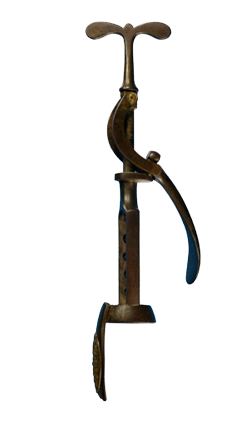
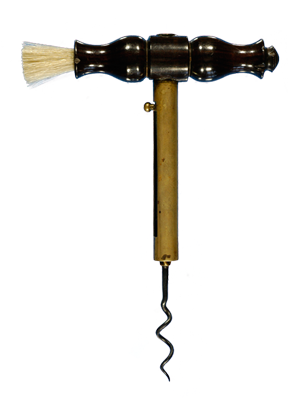
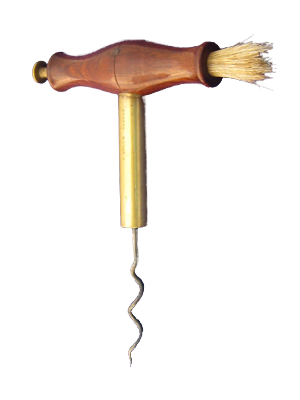
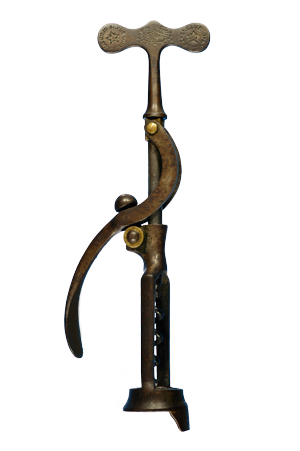
Christopher Johnson & Co
Christopher Johnson was a Sheffield based cutler and corkscrew maker and much of his work still survives, often found in Australia and characterised by their black moulded horn handles. In 1880 Johnson won a gold medal at the Melbourne exhibition.
Robert Jones & Son
Robert Jones & Son were Birmingham based corkscrew makers and there were several generations of the Jones family who were corkscrew/steel toy makers.
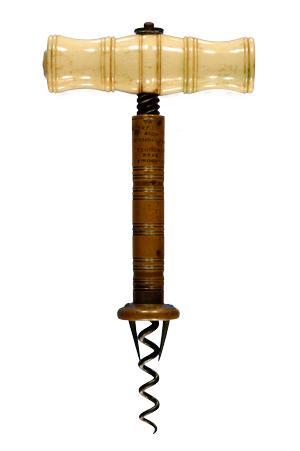
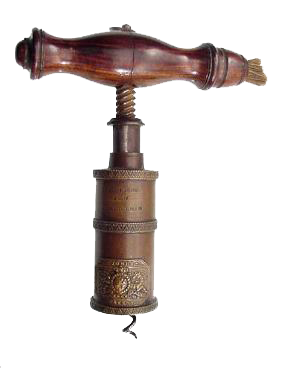
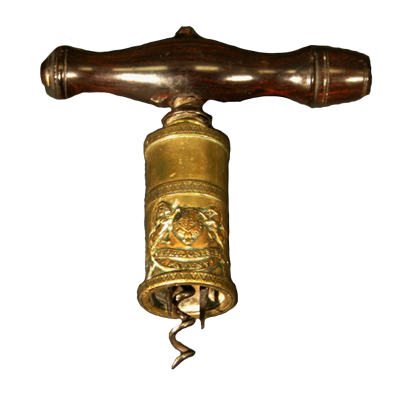
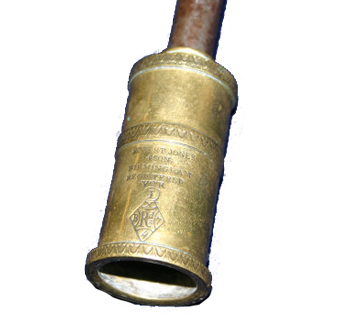
Benjamin Law
Benjamin Law employed just two men and two boys his business was a small one. As well as corkscrews, Law manufactured light steel toys, boot and button hooks and railway keys. Law was granted Registered Design Protection for two different corkscrew designs. These were all metal though some had brass handles whilst others had steel. Laws first registered design was a 3 finger pull corkscrew with lever hole and the second registered design was stamped ‘Plume’ and was also a 3 finger pull corkscrew.
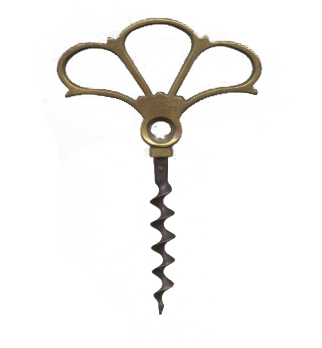
Loach & Clarke
Loach & Clarke were general brass founders but also manufacturers of corkscrews. They made Loach & Clarkes Patent, which consisted of a heavy brass barrel with two internal spikes and a sliding central steel shaft. There was an applied badge on the barrel with a Royal Coat of Arms and the words “LOACH & CLARKE’S PATENT”.
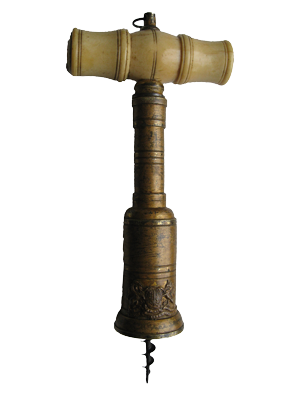
Thomas Lund
Thomas Lund was a corkscrew manufacturer based at 57 Cornhill, London, making mechanical corkscrews including high quality Kings screws and Thomason types. Lund added his bottle grips (springs) that were granted patent protection in 1838. These bottle grips were also on Lund’s Patent London Rack corkscrews.
Examples of Thomas Lund corkscrews were marked ‘LUND’S PATENT 57 CORNHILL/THE QUEEN’S PATENT GRANTED TO T.LUND LONDON MANUFACTURED BY PATENTEE’ or ‘LUND’S PATENT 57 CORNHILL LONDON’ or ‘LUND PATENTEE & MAKER LONDON’.
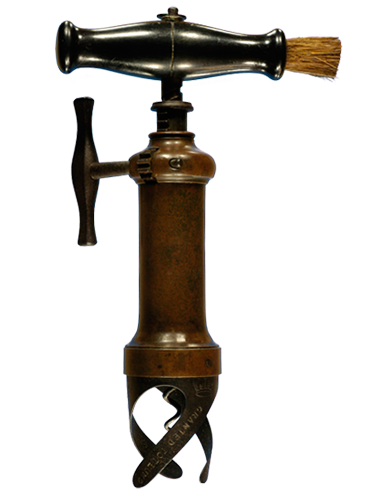
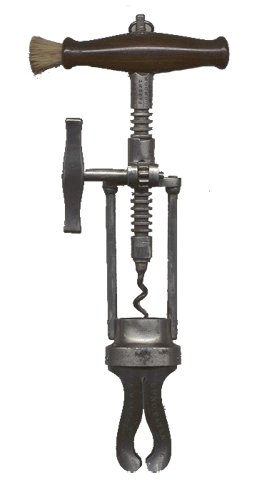
William Lund
William Lund had premises in Fleet Street, London and along with William Edward Hipkins, he was granted a patent for ‘Improvements in the manufacturing of corkscrews’
LUND & HIPKINS I
A steel II pillar corkscrew with rack and pinion mechanism. These corkscrews were marked ‘LUND’S PATENT LONDON RACK’ and some were also marked ‘LUND MAKER CORNHILL/FLEET STREET LONDON as illustrated below.
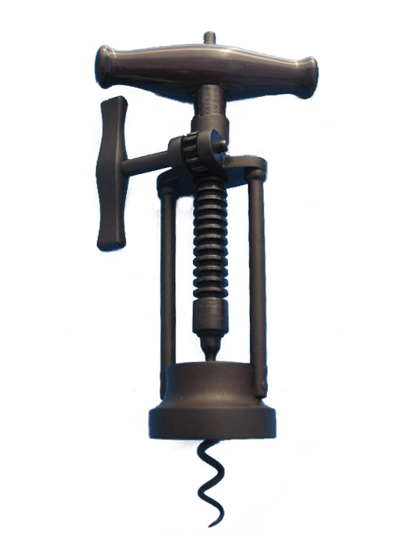
LUND & HIPKIN’S II
‘Lund’s lever’ - These steel lever corkscrews were marked ‘LUND’S PATENTEE LONDON/LUND’S LONDON LEVER FOR DRAWING CORKS’, some examples had a milestone stamped with the words ‘TRADE MARK’.
LUND & HIPKIN’S III
A folding pocket corkscrew marked ‘LUND’S SPHERICAL JOINT LONDON PATENT’.
Edward Marwood & Co
Edward Marwood from Liverpool was granted a patent for a corkscrew No 3871 which was later purchased by Samuel George Mason. This was a bar corkscrew named ‘THE ECLIPSE’. Marwood & Co were also granted protection for two corkscrew designs, one in 1916 and the other in 1921. The first design was marked ‘ED MARWOOD 7 CO LTD REGD 656515/LIVERPOOL and the second design was marked ‘E.MARWOOD & CO LTD REG 682626/LIVERPOOL. There were other corkscrews marked ‘MARWOOD & CO/BLACKBURN & LONDON/REGD 627914.
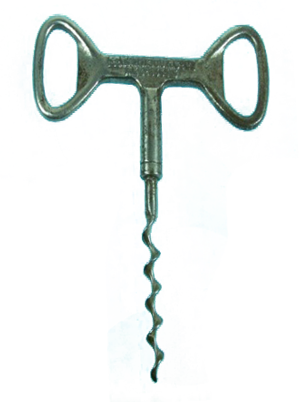
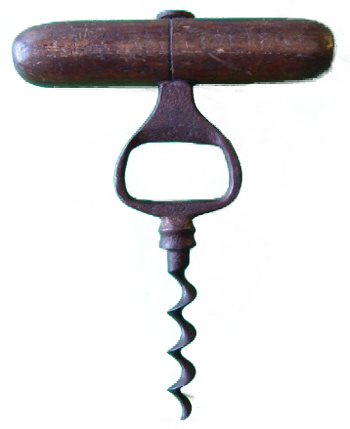
John Joseph Mechi
Mechi made Thomason type and Thomason variant type corkscrews, along with large Peg & Worm corkscrews. Interestingly his firm offered a worm or screw replacement service whereby an old corkscrew could be fitted with a new worm. This service was carried out for a cost of 2 shillings each corkscrew repair. Mechi also sold corkscrews ‘PATENT’ and other, all of superior quality and often their corkscrews were simply marked ‘MECHI’.
Joseph Page
Page manufactured steel snuffers and corkscrews and was granted Registered Design Protection in 1851. They were simple in design and can be found marked ‘REGD AUG 18 1851’, ‘PAGE’, ‘REGD’ or ‘REGISTERED’.
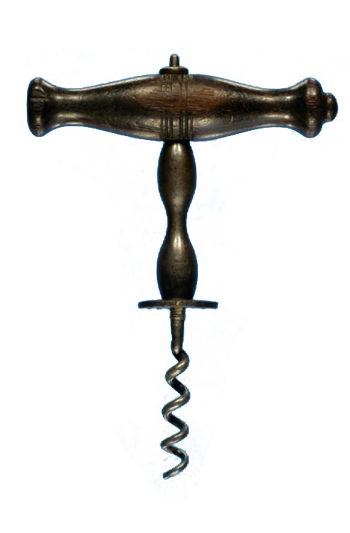
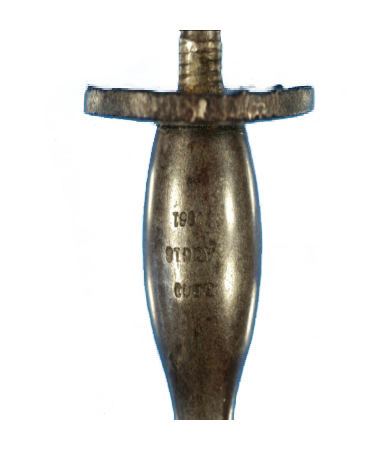
William Plant
William Plant’s manufactory was bought by Stephen Plant who was granted a patent for a corkscrew design called ‘THE WULFRUNA’. These corkscrews were marked ‘WULFRUNA/PLANT’S PATENT No 5549’.
Westley Richards
This firm specialised in manufacturing firearms. Westley Richards Jnr was an inventor and was granted registered design protection in 1849 for his design for a corkscrew. This corkscrew was quite different to others as the worm thread was limited to the upper and lower portions and plain in the centre.
Examples of this corkscrew usually had a fat button incorporated in the shaft stamped ‘WESTLEY RICHARDS BIRMINGHAM VR REGISTERED DECR 28 1849’ and sometimes included the words ‘ROBT JONES & SON MAKER’.
James Henry Stone
Stone was granted patent protection for a multi tool that included a corkscrew. Examples were marked ‘THE BULLDOG PATT 9319’. The Stone family were also granted registered design protection for several corkscrew designs, some of these were finger pull simple corkscrews.
Edwin Sunderland
Sunderland was granted registered design protection for a round-let type corkscrew and in 1870 was granted patent protection for a two pillar corkscrew with a rack and pinion mechanism, which was sometimes marked ‘PROV PAT 2841’. Interestingly the rack was cut on the side pillar with this design.
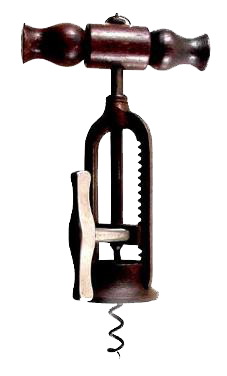
Sunderland was also granted registered design protection for corkscrews that featured can opener combinations.
William Sykes
William Sykes’ business was small, employing just 3 men. Sykes was granted registered design protection for several corkscrew designs, some of which incorporated can openers.
Edward Thomason
Thomason was granted patent protection for a corkscrew design in 1802 and more detail about this section can be found elsewhere on the website.
George Twigg
Corkscrews were a small part of Twigg’s business which also produced horse clippers, self-lighting gas taps and paper fastener. Twigg manufactured his own corkscrews as well as Bateman’s corkscrews. Hyde Bateman was granted patent protection for a corkscrew design in 1866 and examples were marked ‘BATEMAN’S PATENT’.
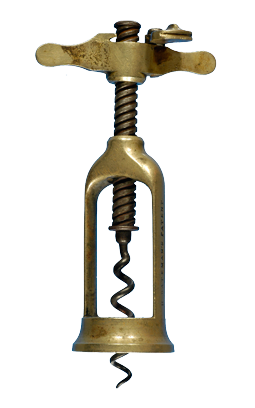
Twigg was granted patent protection for corkscrew designs and these examples were marked ‘G.TWIGG’S PATENT, PERRY & CO PATENT’ or ‘G.TWIGG’S PATENT ENGLAND OCT 10 1867/G.TWIGG’S PATENT U.S.AMERICA JAN 21 1868’ or ‘G TWIGGS PATENT’ as illustrated below.
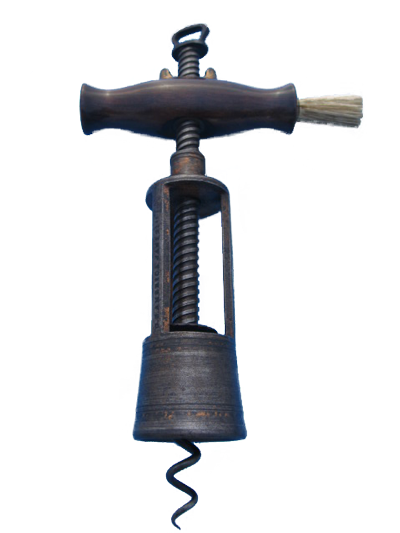
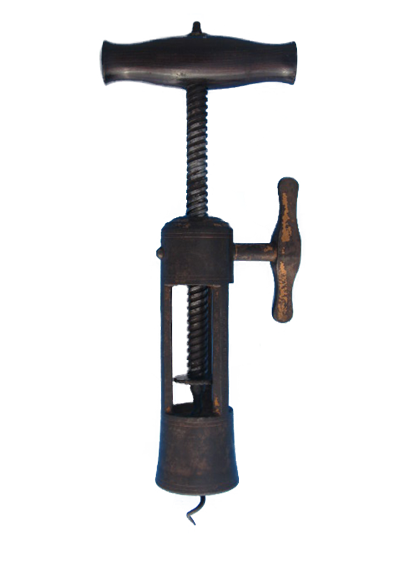
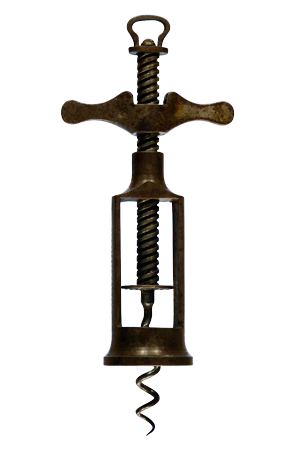
George Twigg & Hyde Bateman’s patent marked ‘G.TWIGG’S PATENT’ - Examples were made with a clutch under the handle and full barrel examples with a piston and catch mechanism.
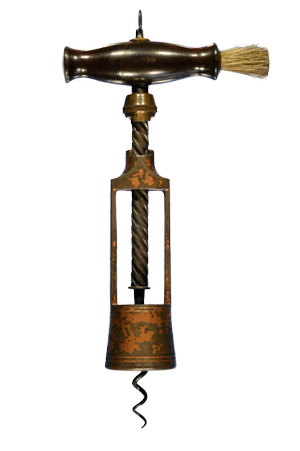
Hyde Bateman’s patent of 1875 was also made by George Twigg, these examples were marked ‘SPONG PATENTEE’.
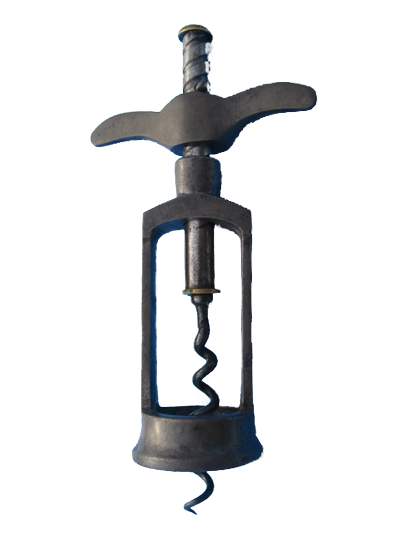
Henry Underwood
Henry Underwood was the London based cutler to Queen Victoria, selling a wide range of corkscrews.
Walter Vaughan
Walter Vaughan was granted two patents for corkscrews and was based in Birmingham.
John Robert Watts
John Robert Watts was a cutler based in Sheffield was known to manufacture among other things pen knives that incorporated corkscrews.
Benjamin Blake Wells
Benjamin Blake Wells was a London cutler and sold a wide range of corkscrews.
George Willetts
The Willett family were steel toy makers across four generations in Birmingham and George was granted registered design protection on several occasions.
‘RD 790035’, was a corkscrew with crown cap lifter incorporated in the handle. A Peg & Worm corkscrew marked ‘IZAL’ with a crown cap lifter on the shaft of the peg registered design number 709401 was also made by Willetts. He was also granted registered design protection for a Lund type lever, along with several can opener combinations and waiters friends type corkscrews. In 1912 registered design number ‘596671’ incorporated a hook on the shaft of the corkscrew, sometimes stamped with the registered design number and sometimes marked ‘PROV PAT’.
Edwin Wolverson
Edwin Wolverson was granted registered design protection for 6 corkscrew designs, along with protection for a champagne tap.
One design was similar to Lunds Lever, protection was granted in 1873, these levers were marked ‘THE TANGENT LEVER’. Another design by Wolverson was marked ‘HOLBORN SIGNET’. Wolverson was granted registered design protection for many other corkscrews.
Books used for reference: British Corkscrew Patents From 1795. Fletcher Wallis. Vernier Press.
Corkscrews: British Registered Designs. Frank and Barbara Ellis.

